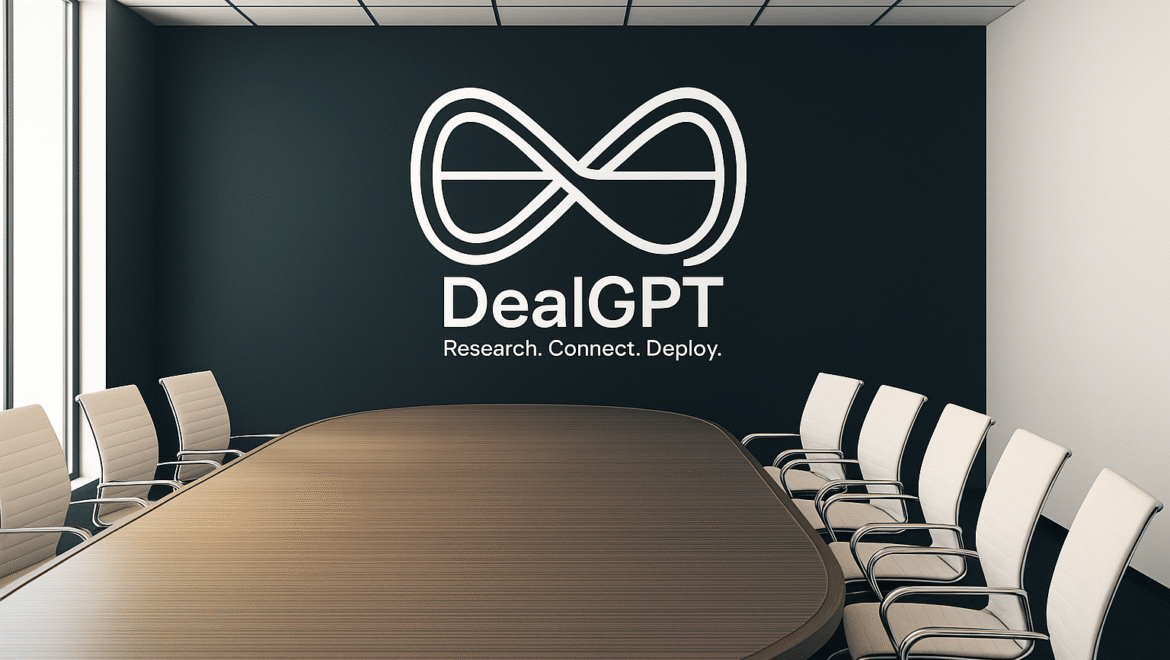Private equity operates in a world of discipline, precision, and long-term engineering. Outsiders think it is about buying companies and selling them for more. Insiders know the truth: PE is the science of transforming businesses under pressure, with capital structure as the lever and execution as the constraint.
This article breaks down the private equity world exactly as insiders experience it, mapped directly to the key stages of the PE lifecycle and aligned with how DealGPT automates each step.
1. The Private Equity Mandate
Every PE decision works backward from required fund returns. Funds carry strict IRR and MoM expectations, and every deal must fit that return trajectory. A typical fund horizon of eight to ten years means each investment must show a clear path to value creation from day one. Deployment pacing also matters. If a fund invests too slowly, LPs question conviction. If it invests too fast, quality suffers.
DealGPT supports this mandate by simulating IRR pathways, monitoring deployment rhythm, and generating real-time fund dashboards for LPs.
2. How Deals Are Sourced
PE sourcing is part science, part relationship muscle. Proprietary sourcing often wins. Some of the best deals happen because a partner has been building trust with a founder for four years, long before a sale was on the table. Outbound sourcing involves sector mapping, CRM workflows, regulatory tracking, industry consolidation mapping, and executive succession intelligence. Inbound sourcing depends on understanding what actually makes an ideal target: founder age, margin profile, fragmentation, customer durability, and competitive defensibility.
DealGPT automates these tasks by scanning markets, enriching CRM data, identifying succession risk, and ranking opportunities in real time.
3. The Investment Committee Lens
All great PE decisions start with a single sentence: We can own this business and improve it meaningfully. From there, firms evaluate every target across five essential levers: revenue growth, margin expansion, working capital optimization, capital efficiency, and eventual multiple expansion. This becomes the investment thesis, the central pillar around which the model, diligence, and risk cases are built.
DealGPT generates the thesis, TAM/SAM/SOM analysis, scenario models, valuation charts, and risk-weighted decision frameworks needed for IC review.
4. The Deep Diligence Process
PE diligence is far more invasive than what most corporate buyers expect. Financial diligence examines true earnings quality, recurring revenue, cash conversion, and debt capacity. Commercial diligence reviews market health, customer concentration, competitive dynamics, pricing power, and regulatory vulnerabilities. Operational diligence evaluates leadership strength, supply chain performance, systems readiness, cost structures, and improvement opportunities.
DealGPT consolidates all third-party reports, extracts red flags automatically, identifies trend anomalies, and runs side-by-side comparison cases across past deals.
5. How PE Values Companies
Valuation in private equity is built on discipline, not storytelling. The valuation stack includes the entry multiple, realistic debt capacity, sustainable cash flow generation, downside cases, and expected exit multiple. The goal is simple: underwrite outcomes, not hopes. This is what separates PE from investment banking. IB sells narratives. PE buys cash flow physics.
DealGPT generates fully auditable LBO models, returns waterfalls, downside and upside simulations, and instant benchmarking across historical deals.
6. The LBO Model: The True Engine Room
Private equity lives and dies by the LBO. Debt sizing depends on leverage tolerance, covenants, cash sweep mechanics, and lender appetite. Return drivers stem from leverage, EBITDA growth, multiple expansion, disciplined capex, and working capital improvements. While the spreadsheet may look simple from the outside, insiders know the art lies in the assumptions. Changing working capital days by three can make or break the deal.
DealGPT builds the entire LBO from scratch in minutes, including sensitivities and scenario toggles that would take teams days to replicate manually.
7. Value Creation and Portfolio Management
Owning a company is only the beginning. Value creation requires discipline and orchestration. PE firms professionalize management teams, upgrade systems, redesign pricing, restructure sales processes, evaluate procurement, pursue bolt-on acquisitions, and engineer operational improvements. Portfolio companies follow a strict rhythm: weekly dashboards, monthly KPI reviews, quarterly board meetings, and 100-day transformation plans after acquisition.
DealGPT serves as the operating system for value creation, producing dashboards, OKRs, transformation models, and automated portfolio alerts.
8. Engineering the Exit
Private equity firms begin planning the exit the same day they acquire the company. The firm must determine who the future buyer will be, what financial story the company will need in four years, and which KPIs must trend in the right direction. Exits can take the form of strategic sales, secondary buyouts, IPOs, or dividend recaps. The real secret is simple: great exits are manufactured, not discovered.
DealGPT continually updates exit cases, buyer landscapes, market comparables, and the five-year transformation story needed to position the asset.
9. Fundraising and LP Relations
LPs invest in repeatability. They evaluate realized returns, team stability, deployment consistency, fee discipline, and attribution clarity. Quarterly reporting is a time-consuming requirement that demands accuracy and narrative alignment.
DealGPT simplifies this by generating LP-ready performance dashboards, attribution breakdowns, risk summaries, and automated quarterly reports.
10. Risk Management and Downside Control
Every PE firm has a second lens beneath the model: the risk lens. This includes leverage risk, multiple compression risk, industry cyclicality, key-person dependency, regulatory shifts, FX exposure, interest rate sensitivity, and operational fragility. Successful firms know that good deals survive upside misses but fail on unmanaged downside risks.
DealGPT tracks these risks continuously, quantifies exposure, and auto-generates red-flag alerts before they escalate.
How DealGPT Handles the Entire Private Equity Lifecycle
Our platform supports the full end-to-end PE cycle:
- Fund strategy creation and deployment pacing
- Deal sourcing with automated market scanning
- Investment committee preparation with thesis and models
- Deep diligence with anomaly detection
- LBO modeling with instant return simulations
- Value-creation planning and KPI tracking
- Portfolio management with alerts and dashboards
- Exit engineering with buyer mapping and equity stories
- LP reporting with automated performance attribution
